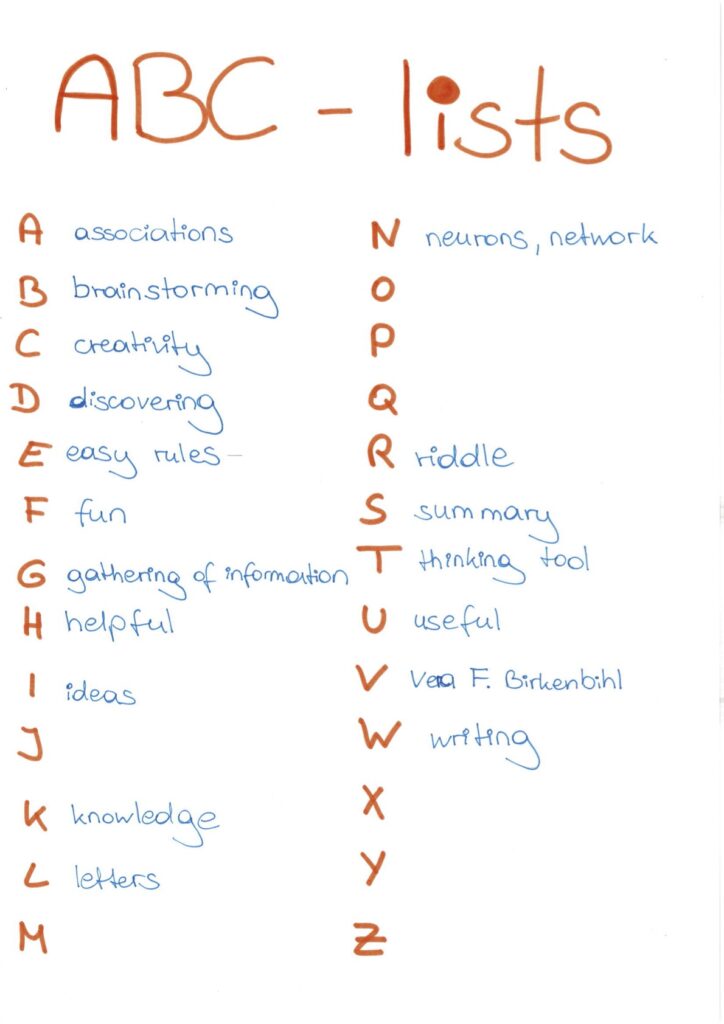We know from experience that people react differently to learning methods. Some like to try out what they have learned; some write summaries; others prefer to remember the material pictorially. The ability to remember is different for each person. That is why some people remember numbers easily, others pictures. Others remember the face but not the name, and others have a special memory, e.g., for dates or poems. Find out what exercise helps you with language learning!
These preferences and memory abilities result in different learning types. There are other classifications of learning types, but the most common is the following classification:
- Visual-Spatial
- Musical-Auditory
- Linguistic-Verbal
- Physical-Kinesthetic
- Logical-Mathematical
- Interpersonal-Social
- Intrapersonal-Solitary
You can find descriptions of each method in this article. Scientists put forward theories that contradict each other. But these theories have one thing in common: the recommendation to involve all senses in studying as much as possible.
So why the divisions into learning types at all?
Even though most people are mixed types in practice, they respond better to some learning methods than to others. Knowing about the classification into learning types helps you to find your individual, optimal learning style.
Different paths leading to the (study) goal
1. the visual-spatial (learning) type
Your motto is: What you see is what you get.
With the power of the visual, learning is easier for you. That’s why CaGas – Creative Analograffiti through Graphic Associations – and CaWas – Creative Word Associations are recommended. Vera F. Birkenbihl had developed her CaGas to rework often complex things into simple drawings and graphics.
Analograffiti is “thinking with a pen in your hand.” It comes from the Greek word grafein (to scratch). According to Birkenbihl, there are three ways: ABC lists, CaWas (word associations), and CaGas (graphic associations).
With CaGas, you represent ideas in small drawings. This particular visual thinking tool can dramatically increase our mental abilities because CaGas help us see things more clearly and form a better picture. Apart from the fact that CaGas also support creative thinking, we are supposed to be focused on acquiring and consolidating knowledge here.
For example, you can represent a story (in a foreign language) in a small drawing. Thus one summarizes vocabulary and phrases. Pictures are much more brain-friendly than pure words because our brain processes pictures at an extremely high speed – up to a thousand times faster than words.
Important: For CaGas, we do not need any drawing ability in the usual sense of the word. Simple sketches or stick figures at the level of four-year-olds are pretty sufficient.

2. the musical-acoustic (learning) type
Your motto is: Sounds good.
Musical talent is reflected in your affinity for music, singing, and making music. Music helps you to think. Therefore, listening to music while learning is positive support for you. You can even learn languages with music: singing along, translating lyrics – everything is possible.
Song lyrics provide both vocabulary and language structure so that you can treat a song like a lesson or other texts. First, songs can be de-coded, and then you go through steps two through four of the Birkenbihl Approach: active listening, passive listening, and activities.
Using songs as learning material has many advantages:
- Vocabulary: vocabulary that might otherwise be missing.
- Content: different topics are covered, which can significantly expand our horizons. For example, when “city kids” sing harvest songs, they develop an idea of country life as a result.
- History and poetry: many songs include history lessons or poetry lessons when talking about the song’s subject.
- Language structure: frequent singing keeps many lyrics in the memory. So language structures are imprinted forever.

3. the linguistic-verbal (learning) type
Your motto is: Tell me in words or write it down, and I will understand.
Repeating what you have learned out loud helps you incredibly well in remembering things. Choir and echo speaking is, therefore, an exercise that is made for you. With these activities, you consolidate and improve your knowledge. Especially your pronunciation will be optimized.
4. the physical-kinesthetic (learning) type
Your motto is: movement is fun-damental.
That means you think in terms of movements. So you learn best when you combine what you learn with physical activity. That’s where pantomime comes in handy. Pantomime is a wonderful exercise for internalizing what you’ve learned. You study just by watching! However, it is even more effective to have a pantomime game with some fellow learners. Learning games are particularly effective because they are fun and bring rapid learning success.

5. the logical-mathematical (learning) type
Your motto is: Why? Well, because it’s logical.
Clever – that’s how we like to describe people who are comfortable with logical relationships and numbers. You belong to these intelligent people if you can solve complex problems often logically and/or mathematically. That is why we recommend the exercise with LongDoku for you. The idea behind LongDoku is based on the popular Japanese puzzle Sudoku. Instead of numbers, you fill a 9×9 grid with words in a foreign language.
6. the interpersonal-social (learning) type
Your motto is: I understand what you mean.
Social relationships are important to you – in everyday life as well as in learning. Learning about others and sharing knowledge with others is part of the learning process for you. Role-playing comes in handy as a learning activity for you. Role-plays are excellent preparation for practice. You learn just by watching! It is even more effective to role play with some fellow learners. Explaining the subject matter to each other is also an essential part of learning for the interpersonal-social learner type.

7. the intrapersonal solitary (learning) type
Your motto is: The goal is within yourself.
Self-discipline is one of your strengths. You know what you do well and less well, and how you can improve. You learn best alone and in a quiet environment. Setting goals helps you achieve them. Any exercises you can do on your own will help you understand the language. These include de-coding exercises and back-decoding exercises. De-coding refers to the word-for-word translation from a foreign language into the native language. For all brain-friendly language courses, you can download de-coding and reverse-decoding activities free of charge. But even without a language course, you can use the method to optimize your language skills – for example, with quotations.
